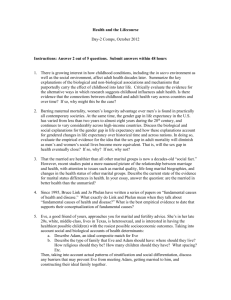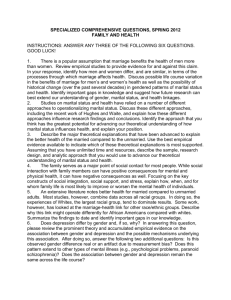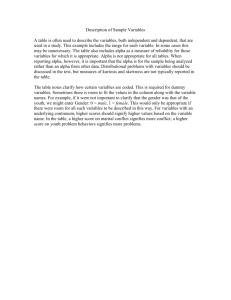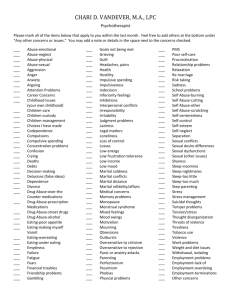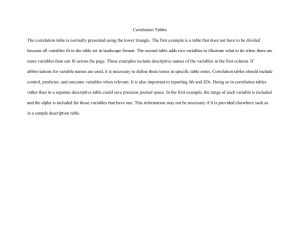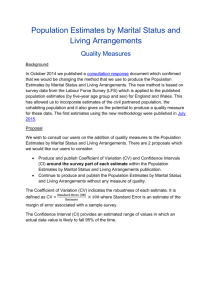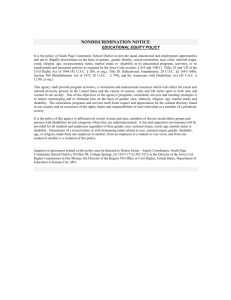General Examination on Sociology of Health Spring 2013
advertisement
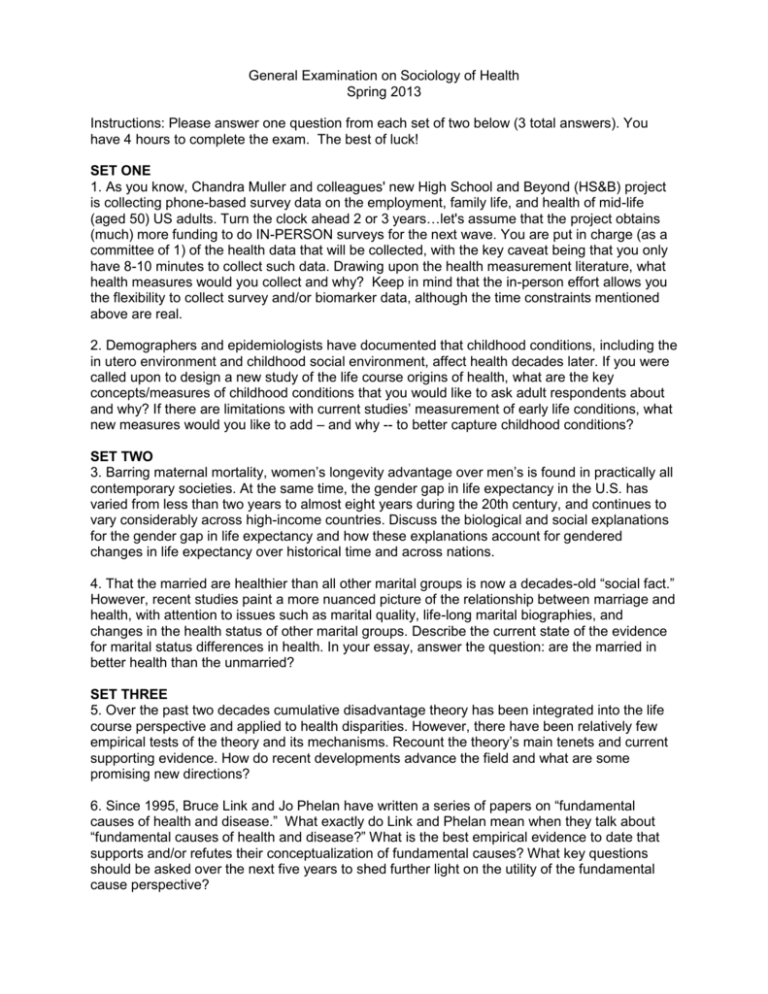
General Examination on Sociology of Health Spring 2013 Instructions: Please answer one question from each set of two below (3 total answers). You have 4 hours to complete the exam. The best of luck! SET ONE 1. As you know, Chandra Muller and colleagues' new High School and Beyond (HS&B) project is collecting phone-based survey data on the employment, family life, and health of mid-life (aged 50) US adults. Turn the clock ahead 2 or 3 years…let's assume that the project obtains (much) more funding to do IN-PERSON surveys for the next wave. You are put in charge (as a committee of 1) of the health data that will be collected, with the key caveat being that you only have 8-10 minutes to collect such data. Drawing upon the health measurement literature, what health measures would you collect and why? Keep in mind that the in-person effort allows you the flexibility to collect survey and/or biomarker data, although the time constraints mentioned above are real. 2. Demographers and epidemiologists have documented that childhood conditions, including the in utero environment and childhood social environment, affect health decades later. If you were called upon to design a new study of the life course origins of health, what are the key concepts/measures of childhood conditions that you would like to ask adult respondents about and why? If there are limitations with current studies’ measurement of early life conditions, what new measures would you like to add – and why -- to better capture childhood conditions? SET TWO 3. Barring maternal mortality, women’s longevity advantage over men’s is found in practically all contemporary societies. At the same time, the gender gap in life expectancy in the U.S. has varied from less than two years to almost eight years during the 20th century, and continues to vary considerably across high-income countries. Discuss the biological and social explanations for the gender gap in life expectancy and how these explanations account for gendered changes in life expectancy over historical time and across nations. 4. That the married are healthier than all other marital groups is now a decades-old “social fact.” However, recent studies paint a more nuanced picture of the relationship between marriage and health, with attention to issues such as marital quality, life-long marital biographies, and changes in the health status of other marital groups. Describe the current state of the evidence for marital status differences in health. In your essay, answer the question: are the married in better health than the unmarried? SET THREE 5. Over the past two decades cumulative disadvantage theory has been integrated into the life course perspective and applied to health disparities. However, there have been relatively few empirical tests of the theory and its mechanisms. Recount the theory’s main tenets and current supporting evidence. How do recent developments advance the field and what are some promising new directions? 6. Since 1995, Bruce Link and Jo Phelan have written a series of papers on “fundamental causes of health and disease.” What exactly do Link and Phelan mean when they talk about “fundamental causes of health and disease?” What is the best empirical evidence to date that supports and/or refutes their conceptualization of fundamental causes? What key questions should be asked over the next five years to shed further light on the utility of the fundamental cause perspective?
